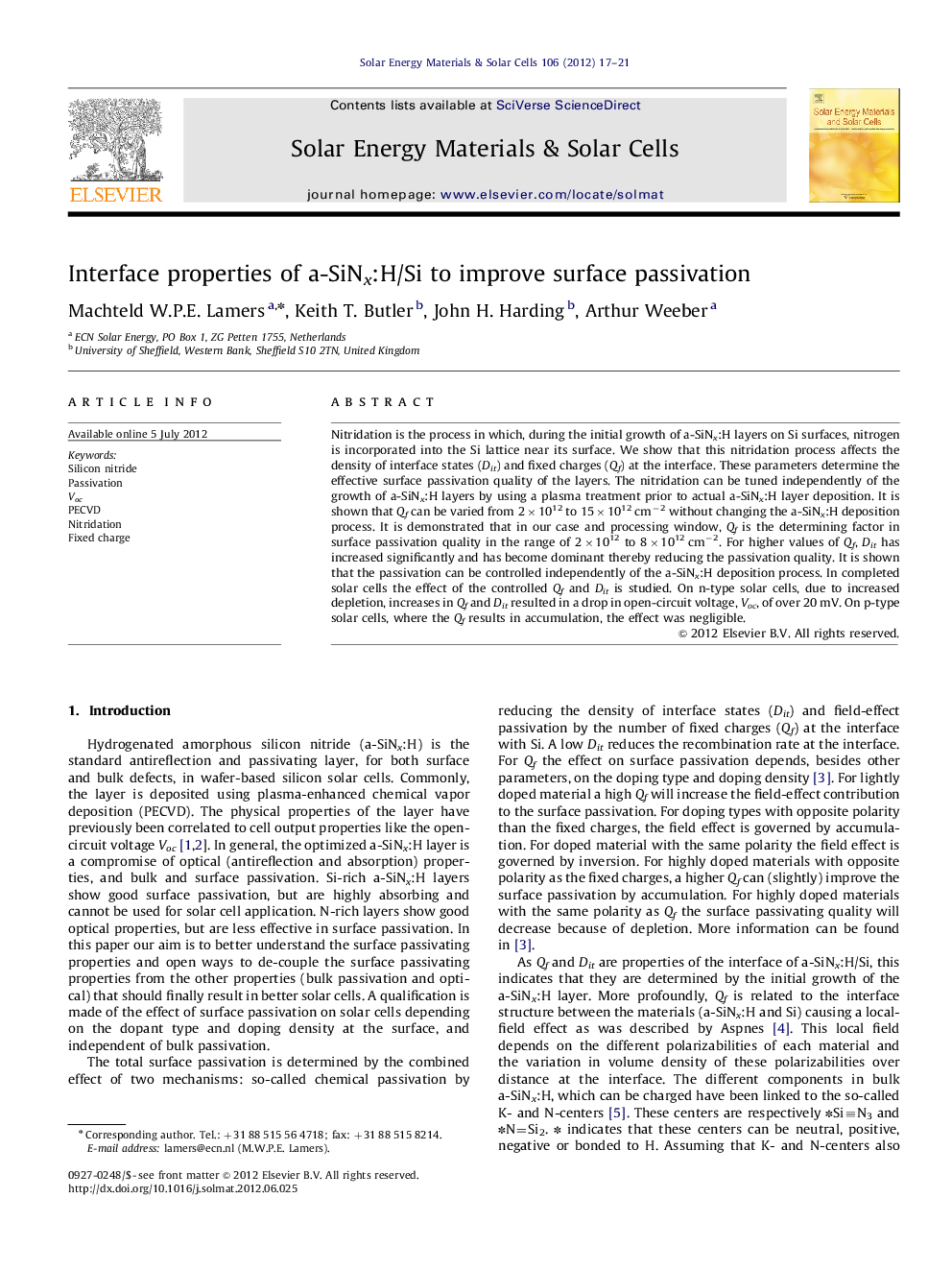| Article ID | Journal | Published Year | Pages | File Type |
|---|---|---|---|---|
| 78348 | Solar Energy Materials and Solar Cells | 2012 | 5 Pages |
Nitridation is the process in which, during the initial growth of a-SiNx:H layers on Si surfaces, nitrogen is incorporated into the Si lattice near its surface. We show that this nitridation process affects the density of interface states (Dit) and fixed charges (Qf) at the interface. These parameters determine the effective surface passivation quality of the layers. The nitridation can be tuned independently of the growth of a-SiNx:H layers by using a plasma treatment prior to actual a-SiNx:H layer deposition. It is shown that Qf can be varied from 2×1012 to 15×1012 cm−2 without changing the a-SiNx:H deposition process. It is demonstrated that in our case and processing window, Qf is the determining factor in surface passivation quality in the range of 2×1012 to 8×1012 cm−2. For higher values of Qf, Dit has increased significantly and has become dominant thereby reducing the passivation quality. It is shown that the passivation can be controlled independently of the a-SiNx:H deposition process. In completed solar cells the effect of the controlled Qf and Dit is studied. On n-type solar cells, due to increased depletion, increases in Qf and Dit resulted in a drop in open-circuit voltage, Voc, of over 20 mV. On p-type solar cells, where the Qf results in accumulation, the effect was negligible.
► Surface passivation can be tuned separately from bulk passivation for a-SiNx:H. ► Nitridation of the Si surface improves the surface passivation by changing Qf. ► Optimal Anti reflection coating properties, bulk passivation and surface passivation can be obtained in one layer. ► Solar cell efficiency significantly depends on the polarity of the fixed charge.
